Can diabetics eat peanuts?
Thanks for the invite.
Diabetics can certainly eat peanuts and they are also a suitable food for sugar lovers.
Diabetes is a disease of glucose metabolism, the main problem is the utility of insulin, some patients do not secrete enough insulin, or there is insulin resistance, insulin sensitivity decreases can not act in a timely manner, or even the destruction of pancreatic islet cells can not be secreted insulin, so that the sugar users of the blood glucose can not be effectively reduced, and theYou need to control the intake of high-sugar foods, but also foods that are fast-glycemic, in order to ensure that your blood glucose is always rising slowly and steadily.However.The sugar content in peanuts is not high, only about 13g of carbohydrates in 100g, does not contain sucrose, glucose and other fast-glycemic factors, eating some peanuts properly will not pose too much of a threat to blood sugar。
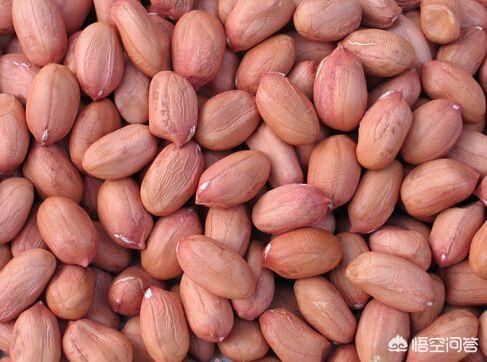
Because obesity, high blood cholesterol, hypertension and other disorders may also affect insulin secretion, increase insulin resistance, so the requirements of the sugar lover's diet is also preferably light and simple, low-fat and low-calorie, and peanuts are very high in fats and oils and can account for about 50% of the total, is it really suitable for sugar lovers to eat peanuts? Yes, it is absolutely favorable and harmless to eat some properly.
Although peanuts are high in fats and oils, most of the fats and oils are unsaturated fatty acidsWhat we might call "good fats", unsaturated fatty acids.In particular, polyunsaturated fatty acids regulate serum cholesterol concentrations, increase the number of HDL (good cholesterol, which cleanses and saturates blood vessels), and also help to reduce the number of LDL (bad cholesterol, one of the triggers of cardiovascular disease).Therefore, proper intake of them can help in the management of three highs and the prevention of cardiovascular diseases. Peanuts also contain antioxidant substances such as resveratrol and flavonoids, which are also factors that can protect blood vessels.Peanuts are rich in nutrients, minerals and vitamins, and which are high in protein and oil, and not easy to make blood sugar spike, as long as the moderate consumption of the words, the benefits of sugar lovers more。
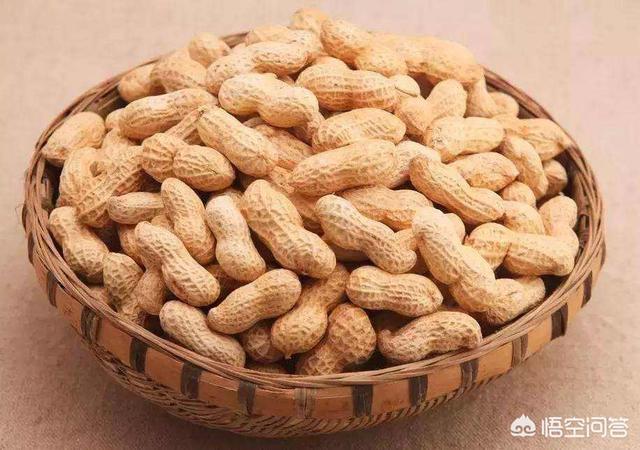
It is recommended that sugar lovers can eat 10 to 15 peanuts a day(the same goes for the average person, don't overdo it), and also with other nuts to increase variety (20~35g of nuts a day is appropriate)Don't eat too much., it is best to eat directly, or boiled, do not fry peanut rice, or go to buy sugar-coated peanuts, fish skin peanuts and other processed peanuts, that may be ingested more fat, but also may have a higher sugar, salt content, but not favorable.
Can diabetics eat peanuts? These kinds of questions are seen from time to time, which seem to be simple but are the most concerned topics for the common people. Therefore, every time Dr. Zhang did his best to answer them in detail. I hope that through my efforts to raise awareness of this issue.

First of all, there is no food that cannot be eaten for diabetics. Even high sugar content of high sugar food, is not absolutely can not eat, as long as it is moderate, usually eat without allergies, all food diabetic patients can eat in moderation. We note that here is said to eat in moderation, rather than can vigorously create. Again healthy food, as long as it is eaten in excess, will eventually bring some health problems. So, there should be a degree of everything, eat the same thing in moderation, not to mention the blood sugar easily elevated diabetic patients.

Secondly, what's not to like about a food like peanuts, which diabetics should never be able to eat. However, how to eat it without affecting your health is a learning curve. For diabetics, to measure whether a food can significantly raise blood sugar, my advice is to look at the glycemic index of the food, abbreviated as GI, also known as the "glycemic index". The reason why we need to look at this index is that it reflects the ability of a food to raise blood glucose in the body. For example, if the GI of a food is less than 55, it can be regarded as a healthy food; if the GI of a food is between 55-70, it can be regarded as a relatively healthy food, but we should pay attention to moderation when we eat it; and if the GI of a food is higher than 70, it has a strong ability to raise blood glucose, so we can eat it but we should eat it less as soon as possible. The food can be eaten, but it should be eaten less as soon as possible. Peanuts belong to a kind of glycemic index is 14 food, diabetic patients can eat in moderation, for the blood sugar effect is not very obvious.
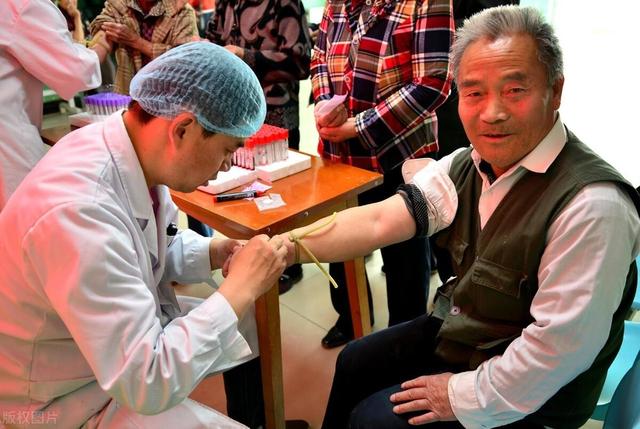
Speaking of which many diabetics may come to a realization that peanuts have little effect on blood sugar. However, we pay attention to, peanuts for blood sugar impact, but for blood lipids, especially triglycerides impact is relatively large, eat more can greatly enhance the level of triglycerides. Diabetic patients themselves high blood sugar brought about by the toxicity of sugar is easy to lead to triglyceride elevation, coupled with a large number of eating peanuts, this time triglycerides will be more likely to rise. Therefore, Dr. Zhang from the point of view of lipids, do not recommend that diabetic patients over eat peanuts.
Speaking of which many friends will ask, peanuts in the end how much is appropriate to eat every day? This question "2016 version of the balanced dietary guidelines for Chinese residents" gives the answer: it is recommended that Chinese residents consume about 25 grams of nuts per day, peanuts belong to the nut food, basically the recommended amount is also this level.
I hope that today Dr. Zhang's this popular science can help the majority of patients with diabetes and abnormal blood sugar in front of the phone, you feel good can also be forwarded to friends and family around.

Diabetics can eat peanuts. To know when and how much peanuts are appropriate for diabetics, you also need to know the nutritional characteristics of peanuts.
Peanuts are abundant in China, widely eaten a kind of nuts, in folklore has "longevity fruit" reputation. Nuts are rich in polyunsaturated fatty acids, minerals, and vitamin E and B vitamins, which are beneficial to health when consumed in moderation. The Dietary Guidelines for Chinese Residents (2016) recommends that adults eat 50-70 grams of nuts (nuts) per person per week.
Let's take a look at the nutritional composition of peanuts: every 100 grams of peanuts contain 47.5 grams of fat, 26.0 grams of protein, 18.6 grams of carbohydrates, 2.4 grams of dietary fiber, and a variety of vitamins and minerals. Peanuts contain polyunsaturated fatty acids, including oleic acid, α-linoleic acid, linolenic acid, etc., for the human body to reduce blood cholesterol levels, prevention of hypertension and arteriosclerosis and other effects. In addition, peanuts contain phytochemicals such as chalcopyrrol and resveratrol, which have antioxidant and anti-aging effects. Due to the high content of oil and protein in peanuts, peanuts have a slow glycemic effect, therefore, for diabetics peanuts are a good addition to the food.
Diabetics should eat peanuts between meals to keep their blood sugar relatively stable. Especially for those who are prone to hypoglycemia at night, eating 10-15 grams (about the amount of a handful of peanuts in an adult woman's hand) of peanut kernels or other nuts before bedtime can keep blood glucose stable at night. Peanuts are a high energy food, so if you eat peanuts, you should include them in your total daily energy intake. 10-15 grams of peanuts or other nuts per day is a good amount for sugar users.
In addition, when choosing peanuts, sugar lovers should try to choose the original flavor of peanuts, because food processing usually brings in more salt, sugar or oil, which is not good for sugar lovers' blood sugar control. When shopping for peanuts, sugar lovers should pay attention to reading food labels and nutritional content tables, and try not to eat peanuts with too much added salt, sugar and oil.
Dr. Ma's Health Group Master's student Xu Yifan
As the old saying goes, you can eat it, but be careful with the portion size.
But let's correct a misconception:Isn't it true that there are a lot of sugar addicts that think of peanuts as nuts?
Although peanuts are viewed as nuts, they are in fact the hallowedLegume seeds, which are usually categorized as oilseeds simply because of their high oil content, are grouped together with nuts.
One study showed that eating an average of 3.1 grams of peanuts per day reduced the risk of diabetes by 20%, which is really kind of incredible.
Moreover, peanuts are not a big threat to obesity, if eaten in moderation, can also play a weight loss effect. Because it belongs to the high-calorie, high-protein, high-fiber foods, can increase the sense of satiety, which is often referred to as "more anti-hunger". According to research, peanuts caused by the feeling of satiety is other high-carbohydrate food 5 times, eat peanuts can relatively reduce the need for other foods, reduce the body's total calorie draw, so as to achieve the effect of weight loss.
However, too much fat intake is not good, so it is recommended to have about 50 grams of peanut rice per day.
Because peanuts are high in fat, they are also used for oil extraction.
The oleic acid content of peanut oil is about half of that of olive oil, while linoleic acid and linolenic acid, two types of polyunsaturated fatty acids, are comparable to oleic acid. We can choose peanut oil produced by the pressing process, which not only has a strong aroma, but also maximizes the preservation of its nutrients such as vitamin E and carotene. However, peanuts are easily contaminated with aflatoxin (a strong carcinogen), so be sure to buy peanut oil of good brand quality.
Sugar lovers are recommended to consume about 25 grams of oil per day and less fried products. This is because the risk of cardiovascular disease in diabetics is two to four times higher than in the general population, and more than two-thirds of diabetics eventually die from cardiovascular disease.
If you have any questions, you can leave them in the comment section and I'll reply when I see them~
The above answer is provided by Ms. Song Mingyue, a registered dietitian of MicroSugar
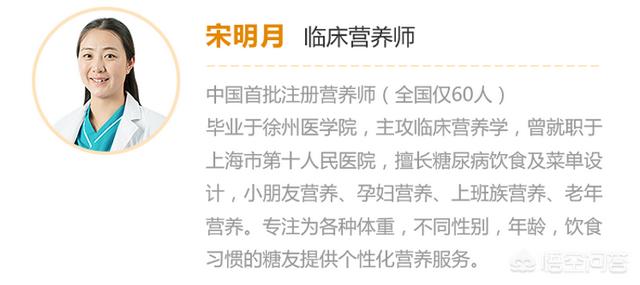
Follow us on Microsugar - Smile for Diabetes
Sugar lovers often worry about eating, eat more for fear of high blood sugar, eat less and hunger and malnutrition. The choice of food becomes a big problem. Like to eat things do not dare to eat, can eat things do not love to eat. For example, peanuts, crispy, crunchy, can sugar lovers eat it?
Nutritional value of peanut rice
Peanuts belong to the oil crops, daily eat peanut oil is extracted from peanuts. Its fat content is high, up to 50%, mainly monounsaturated fatty acids, of which linoleic acid, linolenic acid belongs to our body's essential fatty acids. Daily intake of appropriate amount of monounsaturated fatty acids on the cardiovascular system has a protective effect, can prevent atherosclerosis, coronary heart disease. In addition, peanuts are rich in vitamin E and various minerals.
So, does this mean that diabetics can eat peanuts with impunity? Of course not, how to eat peanuts for diabetics is very delicate.
Serving Suggestions for Peanut Rice
The energy provided by 20 medium-sized peanuts is equivalent to 50 grams of rice. The most important dietary principle for diabetics is to control the total energy intake per day, so peanuts are generally not recommended to be consumed in large quantities by diabetics, and must be eaten in "moderation". When designing diabetic diet recipes, the energy provided by peanuts should be included in the total energy of the whole day.
Dietitians tell you that 18 peanuts eat down the equivalent of eating down a spoonful of oil (10 grams), is an indication that peanuts contain high fat. It is recommended that diabetics eat peanut rice must control the amount.
Cooking Guide for Peanut Rice
Peanuts are best cooked in water and not fried to minimize fat intake. If diabetes is combined with gallbladder disease, peanuts are generally not recommended.
Lots of boiled peanut rice is a culinary sight at the late-night snack stands on summer nights, along with the hairy beans and a variety of cold dishes. In winter, it is not common to see boiled peanuts eaten. Many people use raw peanut rice deep-fried, fried peanuts, and then sprinkled with salt and scallions. It tastes good, but, unknowingly the process ingests a lot of fat and salt. This is a guide to concurrent hypertension.
In summer, you can eat peanut rice cooked with water, so how do diabetics eat peanut rice in winter? In fact, it is relatively simple, the peanut rice in winter can be used to stew or boiled to eat.
Answer from the headlineSugar Man Health, feel free to follow along and ask any questions you may have!
[Professional doctor to answer your questions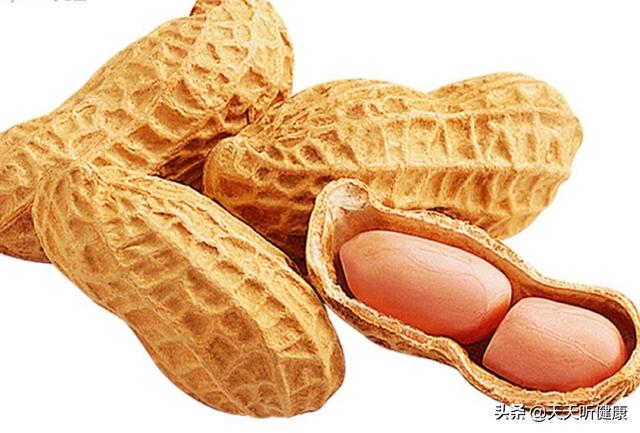
The reason for this question, one is worried about the peanuts have an impact on blood glucose, the second is afraid of peanuts high fat content leading to high blood fat occurs, in fact, as long as the amount of consumption, peanuts in the diabetic dietary control can play a beneficial role, but instead, is recommended as a food, why?
First of all, the peanut sugar content is very little will not have an impact on blood sugar; Secondly, the doctor contains more high-quality protein, not only to meet the body's demand for vegetable protein, but also due to the slower digestion and absorption of protein can eliminate hunger, enhance the sense of satiety, eat some peanuts during meals can help reduce the amount of staple food, but also between the two meals can be chosen as one of the human food; Thirdly, peanuts in the fat to unsaturated fatty acids, this fat can play a competitive role with the saturated fatty acids that lead to atherosclerosis, help remove deposits of fat on the blood vessels to prevent and delay atherosclerosis. Thirdly, the fat in peanuts is mainly unsaturated fatty acids, this kind of fat can play a competitive role with the saturated fatty acids that lead to atherosclerosis, which is conducive to the removal of fat deposited on blood vessels, and prevent and delay the occurrence of atherosclerosis.
Therefore, it is beneficial for people with diabetes to eat some peanuts on a daily basis. The Nutritional Dietary Guidelines for Upper Middle Class Residents and the Chinese Guidelines for the Prevention and Control of Diabetes require that 10-15 grams of nuts should be eaten every day, and peanuts are one of the most cost-effective nuts in the nut food category and are easy to achieve.
Of course, peanuts drink well can not eat more, after all, its fat content is more, too much food will lead to the occurrence of high blood fat, every day to eat 15-20 appropriate, and to fried peanuts or boiled peanuts as well, avoid eating fried peanut rice.
I hope this answer can help you, welcome to click on the attention and leave a message, together to learn and exchange more health knowledge.
Peanuts are also known as "falling peanut"or"peanut", is one of the main oil crop species of the legume family. It has a variety of derivatives in everyday life: there is peanut oil, peanut butter, deep frying as well as sautéed peanuts, etc., which are still cooked in quite a variety of ways.
In fact, peanuts are a high-protein oil crops, rich in fat, protein and carbohydrates, high nutritional value, also known as "plant meat" reputation.
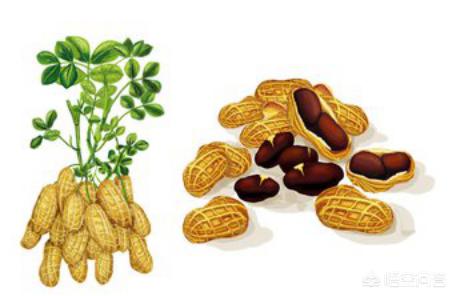
It is known by relevant measurements that the fat content of peanuts is about 40%-50%, the protein content is about 30%, and carbohydrates are about 20%, of which the fat contained in peanuts is unsaturated fatty acids; the protein content contained is about three times that of wheat, corn, and rice. In addition to the above three major energy-producing nutrients, it also contains vitamin A, vitamin B, vitamin K, vitamin E and other nutrients. Chinese medicine point of view, moderate consumption of peanuts is conducive to malnutrition, poor function of the spleen and stomach, as well as coughing, phlegm and asthma and other symptoms of the crowd. For the diabetic population is not recommended, especially in the choice of dishes at the table, it is not appropriate to choose peanuts, the first is not only easy to eat more, the second fat content is too high, not easy to consume the metabolism, easy to cause metabolic disorders of fat, easy to elevate the level of blood lipids, which causes fluctuations in blood glucose, elevated blood glucose.
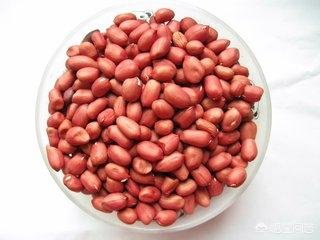
For diabetic patients, although peanuts are good, excessive peanut intake can have a significant elevating effect on blood glucose. It may be related to the carbohydrates it contains, its fat content, and its protein conversion. Sugar lovers beware: if you consume too many peanuts at once, you may increase your blood sugar as well as blood lipid levels, and may also trigger the risk of weight gain and obesity.
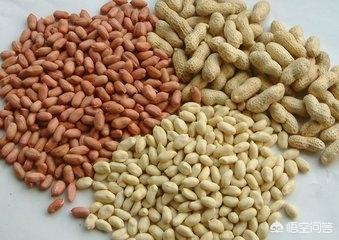
For the ones that really crave it (I believe most people shouldn't crave it so much!) : Sugar lovers are not recommended to eat it when their blood sugar level is unstable, and if they are in the stage of blood sugar stabilization, they can consume it in small amount. Most importantly, when eating peanuts, you should pay attention to its cooking method and the amount of control, boiled peanuts is the best way, never choose deep-fried peanuts, fried peanuts and other further and then elevate the calorie of the cooking method, the recommended amount of 10g or less.
(Note: Pictures from the network, if any infringement, please contact to delete, thank you!)
Peanut fruit contains protein, fat, sugar, vitamin A, vitamin B6, vitamin E, vitamin K, as well as minerals such as calcium, phosphorus, iron and other nutrients, containing eight kinds of amino acids and unsaturated fatty acids needed by the human body, containing lecithin, choline, carotene, crude fiber and other substances. So peanuts are a very nutritious food.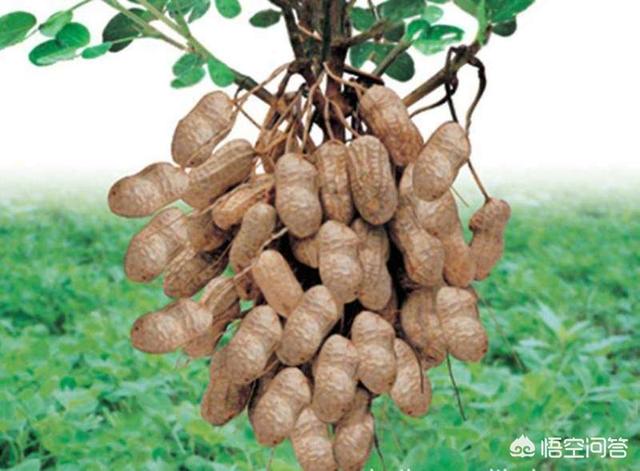
Peanuts contain 44%-45% fat, 24-36% protein and about 20% sugar. Most of the fat is unsaturated fatty acids, and does not contain cholesterol, which contains low sugar, glycemic index is less than 20, is a low glycemic index food.
Peanuts are high in energy, each 100g of peanuts contains 313 kcal of energy, while 100g of rice contains only 116 kcal of energy. So peanuts are a high calorie food.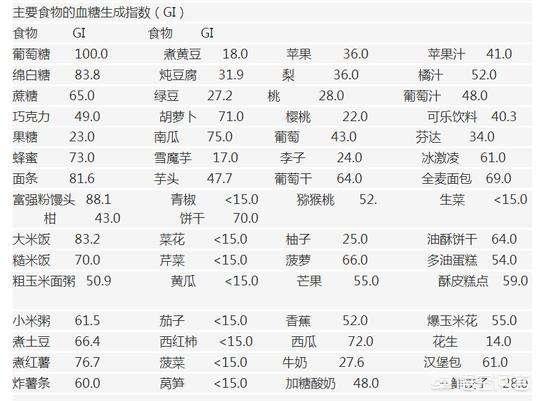
Peanuts are high-calorie, high-protein, high-fiber foods, can increase satiety, which is often referred to as "more anti-hunger". According to research, peanut-induced satiety is 5 times that of other high-carbohydrate foods, eating peanuts can relatively reduce the need for other foods, reducing the body's total calorie intake.
Dietary provisions for diabetic patients: balanced diet, control total calorie and total carbohydrate intake; choose low glycemic index staple foods, avoid white rice and white flour and other overly fine staples, with miscellaneous grains and beans (such as millet, oats, barley, purple rice, mung beans, red beans, black beans), whole grains, miscellaneous legumes should account for ⅓ of the staple food; snacks to choose choose the right amount of pistachios, lentils, walnuts and other nuts, but pay attention to the amount of intake; according to their own situation to choose the appropriate number of meals to add meals, some of the low GI staple foods, fruits can be used as an additional food, counted in the total carbon and hydration.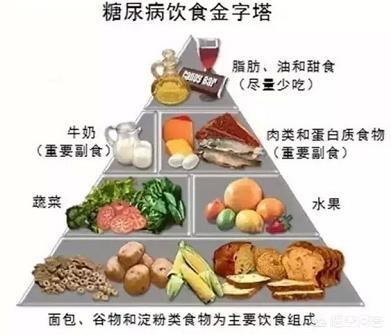
Combining the dietary regulations for diabetes and the characteristics of peanuts, we can find that diabetic patients are perfectly capable of taking peanuts. Although peanut is relatively high in fat, most of its fats are unsaturated fatty acids, which can significantly reduce the total cholesterol and harmful cholesterol levels, and have a good preventive effect on cardiovascular diseases. At the same time, peanuts are rich in folic acid, dietary fiber, arginine, etc., can also play a protective role in the heart. Often take a small amount of peanuts, can reduce the risk of diabetes complication of cardiovascular disease; peanuts, although high energy, but can increase the sense of satiety, for reducing the amount of meals can also play a role in helping; at the same time, peanuts contain a lot of vitamins, fiber and other nutrients, can greatly promote the development of the human body, delaying the aging.
However, peanuts are, after all, a high-energy food, and diabetics have a certain total energy intake. We can take peanuts, but make sure to include their energy in the total energy count. If you want to take peanuts for a long period of time, a small handful per day is recommended.
Note: The pictures are all down from the network, if any infringement please notify the deletion!
Is it good to eat peanuts for diabetes? It is still good for diabetics to eat peanuts, first of all, peanuts can help to smooth out blood sugar after meals, as a kind of nut, it can also supplement unsaturated fatty acids, especially linoleic acid. In addition, peanuts are rich in nutrients, such as: protein, fat, vitamin A, B vitamins, vitamin E, vitamin C, calcium, phosphorus, potassium, magnesium, iron, zinc, selenium and so on, but also rich in vitamin K and choline, eating peanuts has many positive effects on health.
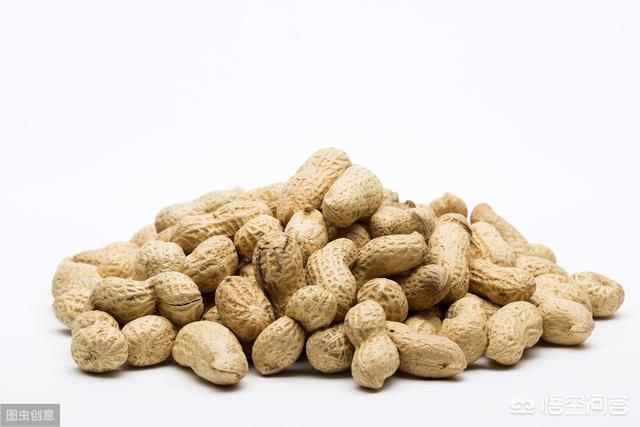
However, the fat content of peanuts is higher, higher energy liquid, so diabetic patients can eat, but it is recommended not to eat too much, so as not to have too much energy to trigger obesity, and for diabetic patients, especially type 2 diabetic patients, improper weight control, the easier it is to affect the control of blood glucose. Peanut most also as the collocation of dishes, such as nuts spinach, or do cold dishes can also add some flavor, Chinese residents dietary guidelines recommend nuts about 10g per day, so it is recommended not to eat more.
And for diabetics, it is recommended to eat peanuts with eating fruits, which can help to better delay the postprandial blood sugar, more conducive to blood glucose control, in fact, not only peanuts, other nuts, such as pine nuts, melon seeds, walnuts, Batan wood and so on nuts, as long as they do not exceed the amount of daily intake, can be used as a match.
Peanuts many people like to eat, especially when drinking many people like to order a plate of peanuts, peanuts are high in protein and vitamins, and the taste is also good, which is why so many people love to eat, so can diabetics eat peanuts? A look to find out.
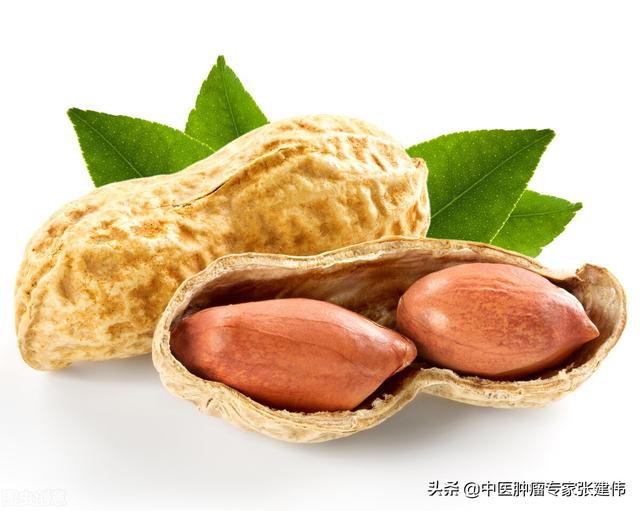
Can diabetics eat peanuts?
In fact, peanuts have a very small effect on blood sugar, so diabetics can eat peanuts, and peanuts are a high-fiber food rich in unsaturated fatty acids, which are good for cardiovascular protection.
One more thing, eating peanuts also slows down the absorption of carbohydrates so that your blood sugar is less likely to rise quickly.
So, there are some benefits of eating peanuts for diabetics, but there is an eventuality in everything, and there are some things to keep in mind.
Diabetics should be careful with these peanuts
Although it is good for diabetic patients to eat peanuts, but we should also pay attention to not excessive consumption, because peanuts also belong to a kind of high-calorie food, if you often eat fried peanuts, then the calorie will always be higher, eat more difficult to consume, may be on the blood sugar to cause a certain effect, so we must pay attention to moderate consumption.
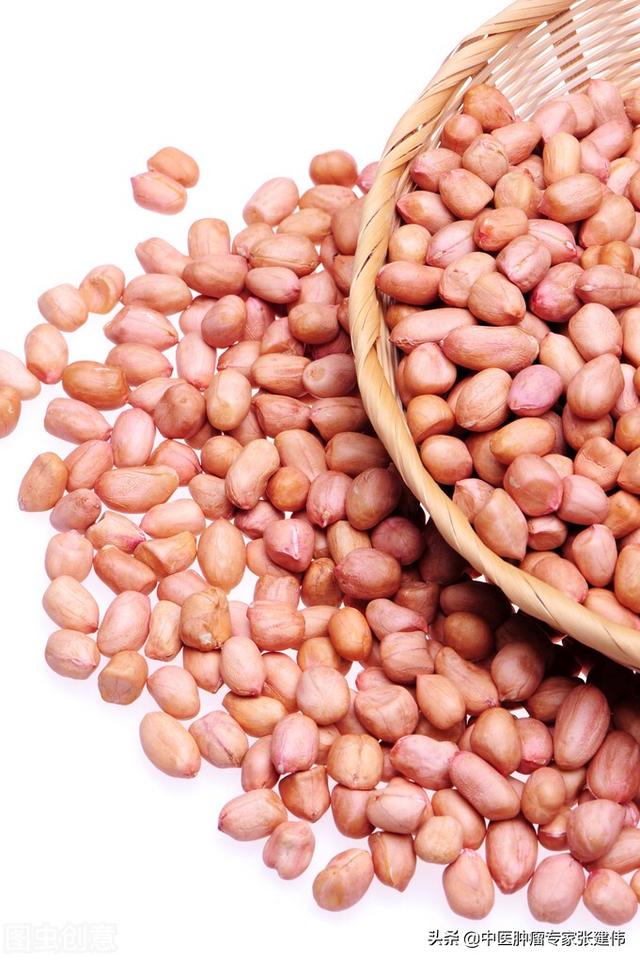
What do diabetics need to eat and drink?
There have been studies done on related sources:In a day's nutritional intake for a diabetic, carbohydrates should make up 55-60%, fat should be less than 30%, and protein should make up 15-25%.
Therefore, in addition to the usual rice and noodles, you can eat more coarse grains, such as oats, millet, oats, etc., and coarse grains can be a good adjustment of blood lipids, but also lower sugar, for laxative also has certain benefits.
Diabetics must eat small, frequent meals, control their diets, pay attention to the distribution of carbohydrates and calories, as well as reasonable medication, and try to go to bed early in the late stages to ensure a reasonable amount of rest.
This question and answer are from the site users, does not represent the position of the site, such as infringement, please contact the administrator to delete.